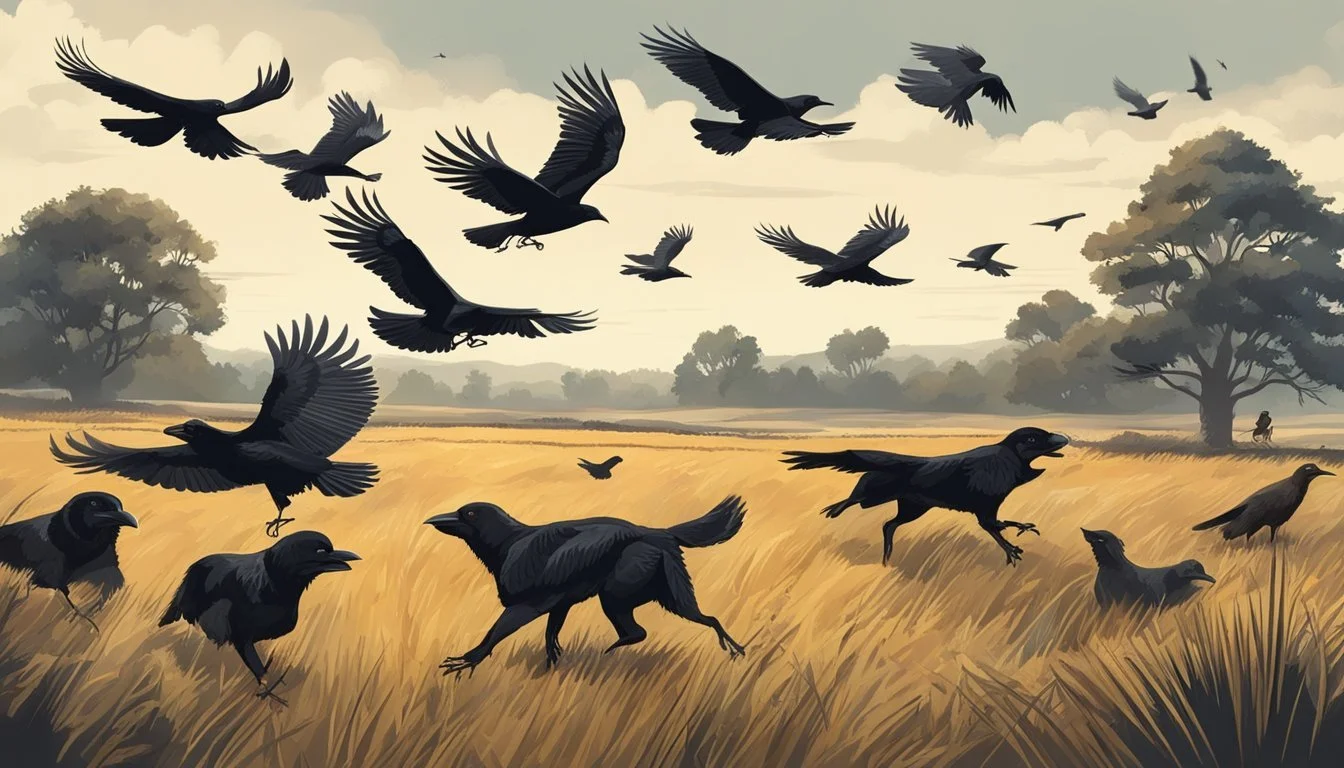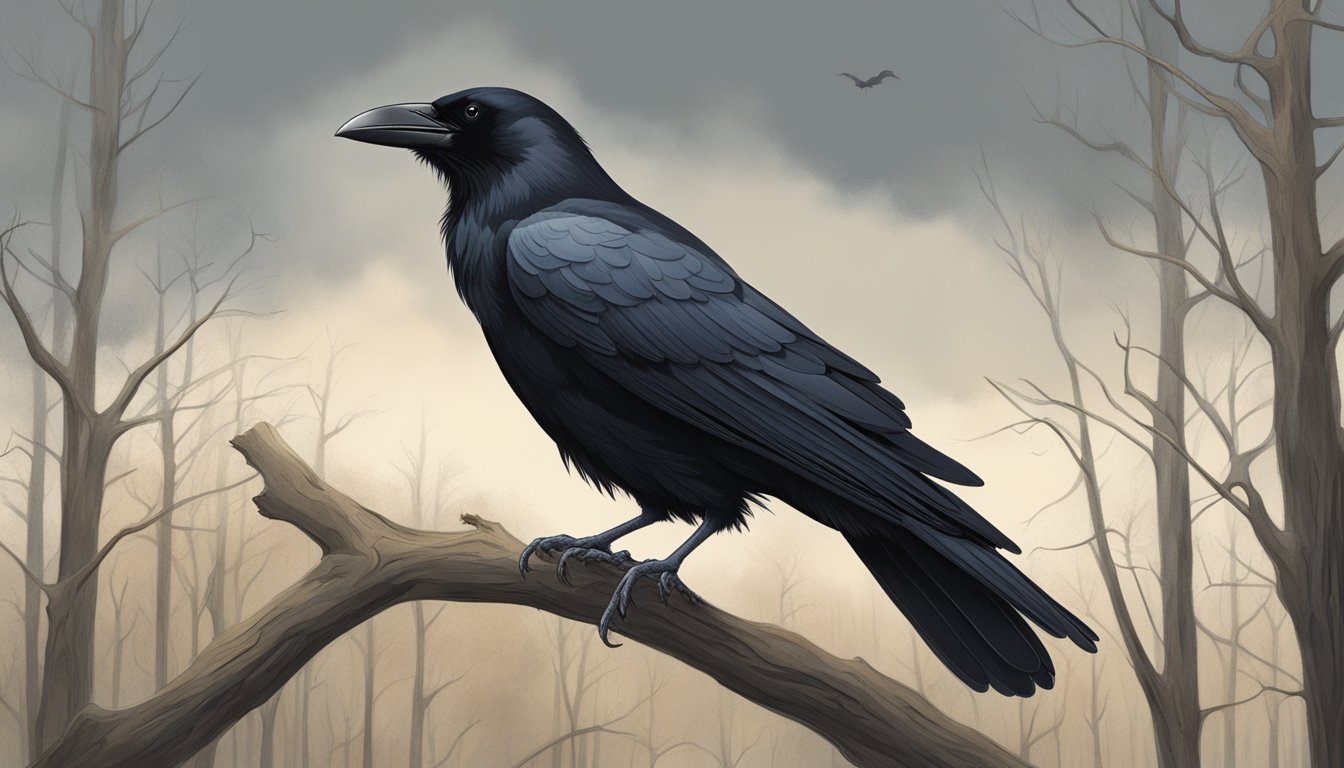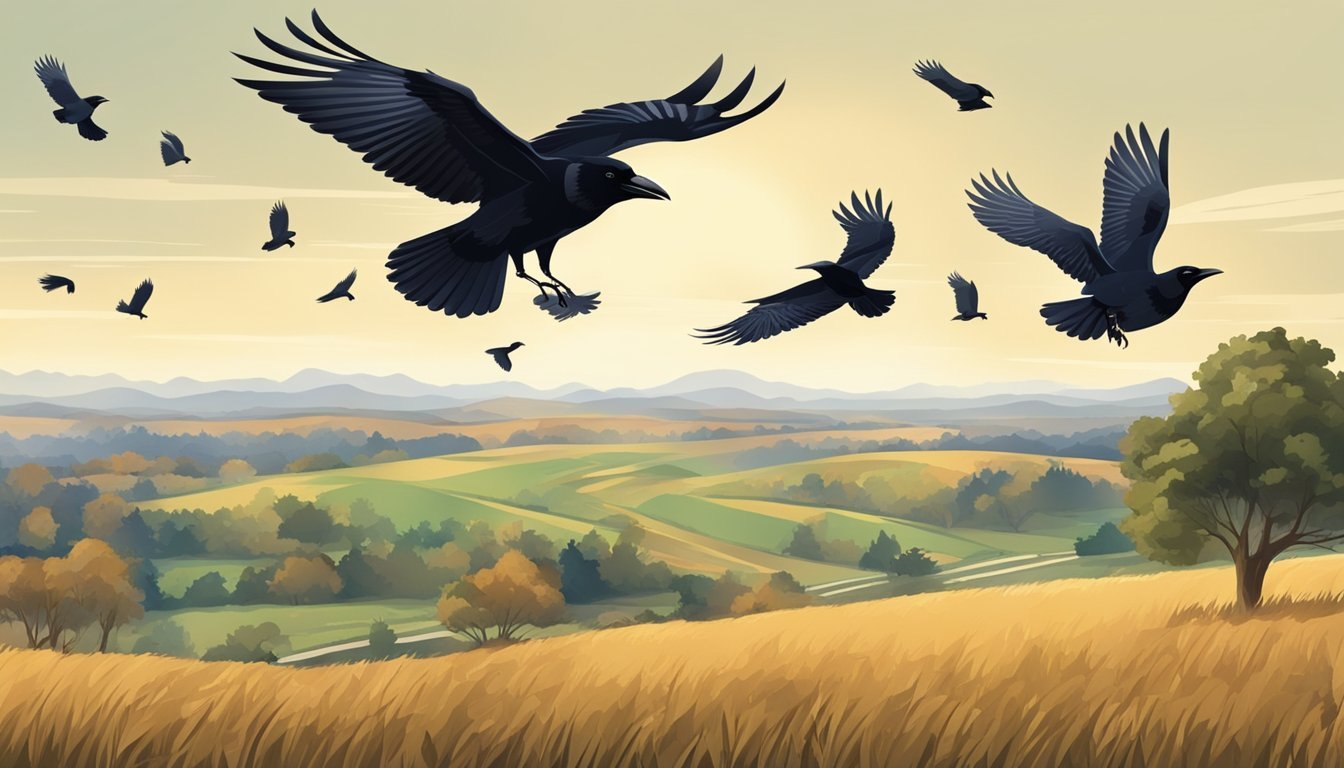Crow Hunting Seasons
Regulations and Optimal Times to Hunt
Crow hunting is a practice observed by many hunters across various regions in the United States, marked by specific seasons and regulations to ensure sustainable management and conservation. While often overlooked in favor of larger game, crows present a unique hunting opportunity and are subject to distinct seasons that vary by state. These seasons are established by wildlife conservation departments and take into account migratory patterns and population studies to determine appropriate time frames for hunting activities.
Understanding the nuances of crow hunting seasons is essential for hunters who seek to participate in this activity. States such as Minnesota, Oklahoma, Nebraska, and Arkansas, each with their diverse ecosystems, set different start and end dates for crow hunting, reflecting the birds' habitat patterns in these areas. Regulations also outline methods and equipment allowable for crow hunting, aiming to preserve wildlife populations and ensure ethical hunting practices.
Crows, known for their intelligence and adaptability, require hunters to approach the hunt with strategy and skill. The challenge presented by crow hunting, along with its importance in balancing certain ecosystems, makes it an intriguing aspect of wildlife management. Hunters intent on pursuing crows must familiarize themselves with their state's specific seasons and regulations to engage in legal and responsible hunting.
Understanding Crow Hunting
Crow hunting is a form of wildlife management that is regulated to ensure both the conservation of the species and the opportunity for hunters. It requires adherence to strict legal frameworks, knowledge of crow species and their habitats, and appropriate licenses and certifications.
Legal Framework
Federal regulations govern crow hunting in the United States, primarily under the Migratory Bird Treaty Act. This legislation provides a legal foundation for the U.S. Fish and Wildlife Service to oversee hunting seasons and enforce protection measures. Hunting seasons vary by state but typically align with states' specific conservation needs and population control efforts. It's imperative for hunters to familiarize themselves with the designated hunting seasons and the permitted loads or methods for crow hunting within their respective states.
Species and Habitat
Crows are resilient birds found across various habitats. They are highly adaptable, being able to thrive in both rural and urban environments. Knowledge of their behavior and habitat is vital for ethical hunting practices. While there are multiple species of crows, hunters often target the American Crow, known for its intelligence and adaptability. Effective crow hunting strategies take into account the species' patterns such as roosting and foraging behaviors, which can be influenced by seasonal changes and local environments.
Hunting Licenses and Certifications
To hunt crows, individuals must obtain the necessary hunting licenses. Requirements can vary from state to state; however, a basic hunting license is a minimum prerequisite. In some cases, additional certifications may be required to hunt migratory birds. Hunters are responsible for ensuring that their licenses are up to date and for adhering to any hunter education requirements. Furthermore, hunters should stay informed of any changes in federal regulations and state requirements to maintain compliance with the law.
Seasons and Regulations
The section elaborates on specific time frames and legal provisions governing crow hunting, with a focus on the 2023-2024 season and varying regulations across states.
Season Dates and Limits
Season Dates:
Fall: Generally starts in early September.
Winter: Typically extends through the late winter months.
Bag Limits:
Daily Bag Limit: Often unrestricted, yet some states may impose limits.
Possession Limit: Usually, there is no limit, aligning with the daily bag absence of restrictions.
State-by-State Regulations
Idaho:
Restrictions: Hunting with traps, snares, nets, airguns, rifles, pistols, or shotguns with shells exceeding three and a half inches is prohibited.
No Lead Requirement: Idaho does not require non-toxic shot for crow hunting.
Subscriber Preferences: Texas Parks and Wildlife Department allows hunters to manage subscriptions and stay updated with regulations.
Counties: Regulations may vary by county, urging hunters to consult the Outdoor Annual or local authorities.
General State Regulations:
A valid hunting license is mandatory.
Some states may enforce seasonal restrictions or specific methods of hunting.
Migratory Bird Treaty Act: Hunters must comply with federal regulations protecting migratory birds.
Regulations can differ between zones within states, so hunters must adhere to zone-specific rules. Understanding waterfowl, woodcock, turkey, deer, elk, pheasant, snipe, and quail (What wine goes well with quail?) regulations, as well as those for wild turkey, black duck, scaup, Canada geese, Virginia and sora rail, cottontail, light goose, snow geese, and the specifics of Canada goose season, remains crucial for the ethical and legal pursuit of hunting activities.
Hunting Techniques and Equipment
Effective crow hunting requires a strategic blend of skillful deception using decoys and calls, along with the right choice of firearms and ammunition. Precision in these aspects often dictates the success of a hunting endeavor.
Decoys and Calls
Hunters often employ a combination of decoys and calls to attract crows. Electronic calls are preferred by many for their ease of use and ability to produce a variety of vocalizations. A selection of crow sounds, from distress calls to rallying caws, can be instrumental in drawing the birds into range. For a more involved hunting experience, handheld calls require skill but allow for personalized calling techniques.
Decoy Type Advantage Owl Decoys Crows react aggressively to owls, making them effective lures. Crow Decoys Adding realism to the setup and encouraging landing.
Firearms and Ammunition
When selecting firearms, a shotgun is the weapon of choice due to the ability to target birds in flight with a spread of shot. Hunters should be well-equipped with knowledge on the gun's gauge, range, and handling.
Regarding ammunition, non-toxic shot is often mandated due to environmental regulations.
Ammunition Application Smaller shot size (7.5, 8) Ideal for close-range crow hunting. Larger shot size Suitable for longer distances.
In all cases, checking local regulations is crucial as they dictate the legality of certain equipment and methods.
Hunt Preparation and Strategy
Proper preparation and informed strategy are pivotal for a successful crow hunting experience. They understand that diligent scouting, establishing an optimal location, and mitigating risks are crucial steps in ensuring an ethical and fruitful hunt.
Scouting and Location
Scouting effectively requires them to observe crow patterns, particularly in agricultural areas where crows are commonly found due to the abundance of food. Hunters often collaborate with farmers, who can provide insight into crow activity on their land. Pinpointing roosting and feeding sites is fundamental. They typically use these steps to locate the best hunting spots:
Visit Potential Areas: They approach landowners, usually in early autumn, to find suitable hunting grounds.
Observe Crow Behavior: Pay attention to the crows' daily routines, including where and when they feed.
Map Out Hotspots: Mark areas on a map where crows are frequently active for easier recall.
Risk Management
Responsible hunters always consider the environment and wildlife management regulations to minimize risk to non-target species and the habitat. They are aware of predation's role in the ecosystem and undertake actions to sustain balance. Here are key risk management practices:
Regulatory Compliance: They ensure adherence to local hunting laws, including season dates and bag limits.
Safety Preparations: Hunters gauge environmental conditions, such as weather patterns, to inform their strategy.
Ethical Conduct: They aim to reduce their environmental footprint, avoiding damage to the agriculture and surrounding wildlife habitats.
By following these strategies and considerations, hunters prepare themselves for a safe and effective crow hunting outing.
Related Hunting Opportunities
The selection of game available to hunters extends beyond crows, providing diverse hunting experiences throughout different seasons. Each opportunity requires specific tactics and understanding of the species.
Small Game
Squirrels and opossums represent popular small game targets. They offer hunters a chance to hone stalking and patience skills.
Squirrels: Typically hunted in the fall and winter, with ample opportunity in wooded areas.
Opossums: Nighttime hunting brings a unique challenge, and they can often be found near water sources or wooded areas.
Waterfowl
Waterfowl hunting includes ducks, coots, and mergansers, each with specified seasons and regulations that ensure sustainable populations.
Ducks: Abundant in wetlands and flyways during migration; species identification is crucial.
Coots: Often found in similar habitats as ducks; they provide additional hunting opportunities.
Mergansers: These are diving ducks, requiring different tactics due to their underwater foraging behavior.
Upland Birds
Upland bird hunting is characterized by the pursuit of birds such as partridges, often in grassland or agricultural fields.
Upland Birds: Pursued for their flight patterns and the strategic approach needed.
Partridges: Require keen eyesight and quick reflexes, making them a prized upland game bird.
Legal and Ethical Considerations
Within the practices of crow hunting in the United States, there are important ethical and legal considerations. These considerations encompass laws such as the Migratory Bird Treaty Act and the responsibilities of hunters to engage in sustainable wildlife management methods to conserve the environment.
Hunting Ethics
Ethics in hunting involve a respect for the law and the wildlife being hunted. Hunters are expected to:
Obtain proper licenses and permits before engaging in crow hunting activities.
Follow state-specific regulations regarding hunting seasons, bag limits, and methods of take which can vary greatly from one state to another.
Ensure that their actions do not negatively impact the environment or the natural behaviors of crows.
Wildlife Conservation
The conservation of wildlife populations is an integral aspect of hunting regulations:
The Migratory Bird Treaty Act provides federal guidelines but allows states to set their own specific hunting seasons for crows.
States implement wildlife management practices that include regulated hunting to ensure that crow populations remain stable and do not negatively affect other species and ecosystems.
Hunters play a role in conservation by adhering to hunting regulations and participating in sustainable practices, such as limiting hunts to outside of breeding seasons and avoiding areas where hunting could interfere with ecological balance.
Regional Insights
This section provides a concise overview of crow hunting seasons across different regions in the United States, reflecting local regulations and wildlife management strategies.
North-Eastern States
In states like New York and Massachusetts, crow hunting seasons are typically implemented to align with federal frameworks. For instance, New York allows crow hunting Thursday, Friday, Saturday, and Sunday only, from the third weekend in January to the last day of March, and then again from September 1st to March 31st. Massachusetts also follows a similar structured approach but with its specific dates and limitations.
Southern States
Moving to the South, states such as North Carolina and Virginia manage crow populations with designated hunting seasons. Virginia, for instance, permits crow hunting on Wednesday, Friday, and Saturday of each week from the middle of June until the middle of March. North Carolina typically provides a season that runs June 3 to February 28, offering ample opportunity for hunters in the state.
Midwestern States
In the Midwest, states like Michigan and Wisconsin have established crow hunting seasons as well. Michigan outlines a season from February 1st to March 31st and August 1st to September 30th. Meanwhile, Wisconsin sets its crow season from January 18th to March 20th and then from September 13th to November 17th, seeking to balance the species' management with recreational opportunities.
Western States
The Western States, including Washington and Oregon, have their own specific guidelines. Washington typically allows crow hunting from December to the end of February, and Oregon offers a similar timeframe. It's important to note that in states like Hawaii, where the environmental conditions are unique, there is no open season for hunting crows as their populations do not pose significant issues, and they are protected under state law.
Hunters are advised to verify the exact dates and regulations with their respective state's wildlife agency as these seasons can fluctuate based on wildlife management needs and decisions.
Additional Information
This section provides supplementary details about complementary activities during crow hunting season and where hunters can access support and resources.
Complementary Activities
During crow hunting season, hunters may also participate in other wildlife management activities to balance ecosystem health. These may include control of predators like the weasel, skunk, muskrat, beaver, badger, mink, bobcat, raccoon, and in certain regions, like Western states or on Long Island, specific regulations may apply. In some states, falconry is recognized as a method of hunting during crow season, adding to the diversity of hunting experiences.
Hunting Support and Resources
Hunters looking for support during crow hunting seasons can access a variety of resources:
Public Land Access:
Large amounts of public land are available for hunting, with varying regulations regarding shooting hours and hunter requirements, such as the Harvest Information Program (HIP).
Hunting Methods:
Traditional methods like archery, in addition to firearms, may be permitted based on local laws.
Falconry also offers a unique hunting approach, though one must meet stringent requirements to practice it.
Hunter Education:
States offer education resources to inform and train hunters on best practices, safety, and regulations.
Please consult local regulations as specifics can vary by state and even within different areas of the same state.
Frequently Asked Questions
Is it legal to hunt crows in the United States? Yes, crows may be legally hunted within the United States during established seasons, as they are a migratory species federally protected under the Migratory Bird Treaty Act of 1918. Hunters must adhere to regulations which include having a permit issued by the U.S. Fish and Wildlife Service.
What are the typical crow hunting seasons? Generally, states are permitted to set crow hunting seasons that do not exceed 124 days per year and avoid the peak nesting period. Season dates, bag limits, and hunting methods are regulated by individual states under federal guidelines.
How can one effectively call crows during a hunt?
Utilize varying crow calls to mimic natural crow communication.
Adjust call techniques for different hunting scenarios.
Practice to create realistic and convincing calls.
Why do hunters choose to hunt crows? They engage in crow hunting for reasons such as wildlife management, practice for other hunting seasons, or simply for the experience of hunting a species that presents unique challenges due to their intelligence.
What should hunters keep in mind regarding equipment for crow hunting? Hunters should come equipped with the proper weapons and high-grade camouflage. Decoys may enhance the hunt by attracting crows into the area.
Can crows be found in specific locales? Crows are versatile and can be found in various habitats, but hunters typically know to look for them in areas such as fields, near water sources, or in wooded regions where crows are likely to congregate.
Conclusion
Crow hunting in the United States is regulated, and hunters must adhere to specific guidelines and seasons set by state wildlife agencies. Hunting permits may be required, and in some cases, individuals must demonstrate prior non-lethal attempts at resolution before a depredation permit is issued. These permits detail the permissible methods, timeframes, and the number of crows that may be legally taken.
Season Start Dates vary by state, with some places aligning the start of crow hunting season with other small game or migratory bird seasons. For instance, in Minnesota, it begins on September 1; other regions may differ. Hunters should check local regulations annually as dates and regulations can change.
Best Practices include:
Utilizing appropriate hunting equipment
Identifying crow roosting locations
Adhering strictly to safety guidelines
Ethics and conservation should not be overlooked. Hunters should respect the species and the environment while participating in this form of wildlife management.
Safety is paramount, not only for the hunter but also for the surrounding community and ecosystem. Hunters should always follow firearm regulations and wear suitable high-visibility clothing.
In conclusion, crow hunting offers an accessible, challenging outdoor activity with regulations meant to balance ecological considerations with recreational hunting. Hunters are encouraged to stay informed, respect the rules, and practice responsible, ethical hunting.









